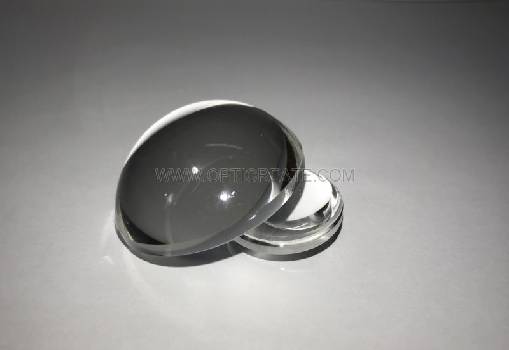The Spherical Lens has the congenital defect of spherical aberration, which brings about the insurmountable flare phenomenon. Obviously, it will affect the image quality. With aspheric lenses, the light can be accurately projected at one point by refraction of the light through the higher-order curved surface.
The important feature of Aspheric Lenses is that they can improve the refractive index of the edge of the lens to light, so that the edge of the lens becomes better. Spherical lenses, especially high-magnification spherical lenses, are more prone to spherical aberration and image distortion, especially barrel distortion caused by light refraction at the edge of the spherical lens. When an aspheric lens is used for a high-magnification zoom lens, because the aspheric lens is designed, the incident light at the edge is corrected in the opposite direction of the spherical lens distortion, thereby effectively eliminating barrel distortion.

Aspheric Lenses
Since one aspherical lens can replace a set of spherical lenses, the optical structure of the Camera Lens is relatively simplified, so that it is easy to obtain a larger light aperture in the optical path and mechanical structure. In addition, because the aspheric lens can make the light from the edge part and the light from the central part pass through the lens and focus on the same plane, the surface of the entire lens can be used clearly and effectively, so that the entire lens can be correctly focused, which is relatively effective. The aperture diameter becomes larger.
As the effective aperture of the aspheric lens increases, more light can be projected onto the CCD photosensitive surface, which also increases the sensitivity. In addition, because one aspherical lens can replace several spherical lenses in a group, the size and weight of the camera lens are reduced, and the light passes through fewer lenses, so the light transmittance is greatly enhanced, and the image is also changed. Delicate and bright.
Although the aspheric lens has the above advantages, in addition to the precise calculation of the lens design, its processing technology requirements are also very high. For example, the physical properties of low-scatter aspheric lenses need to ensure the most precise processing accuracy during polishing and coating; the optical properties of the special optical resin of the formed aspheric layer also need to be guaranteed during the molding process. Management can achieve the best practical state.
Copyright:@2020-2021
Comments Please sign in or sign up to post.
0
0 of 500 characters used